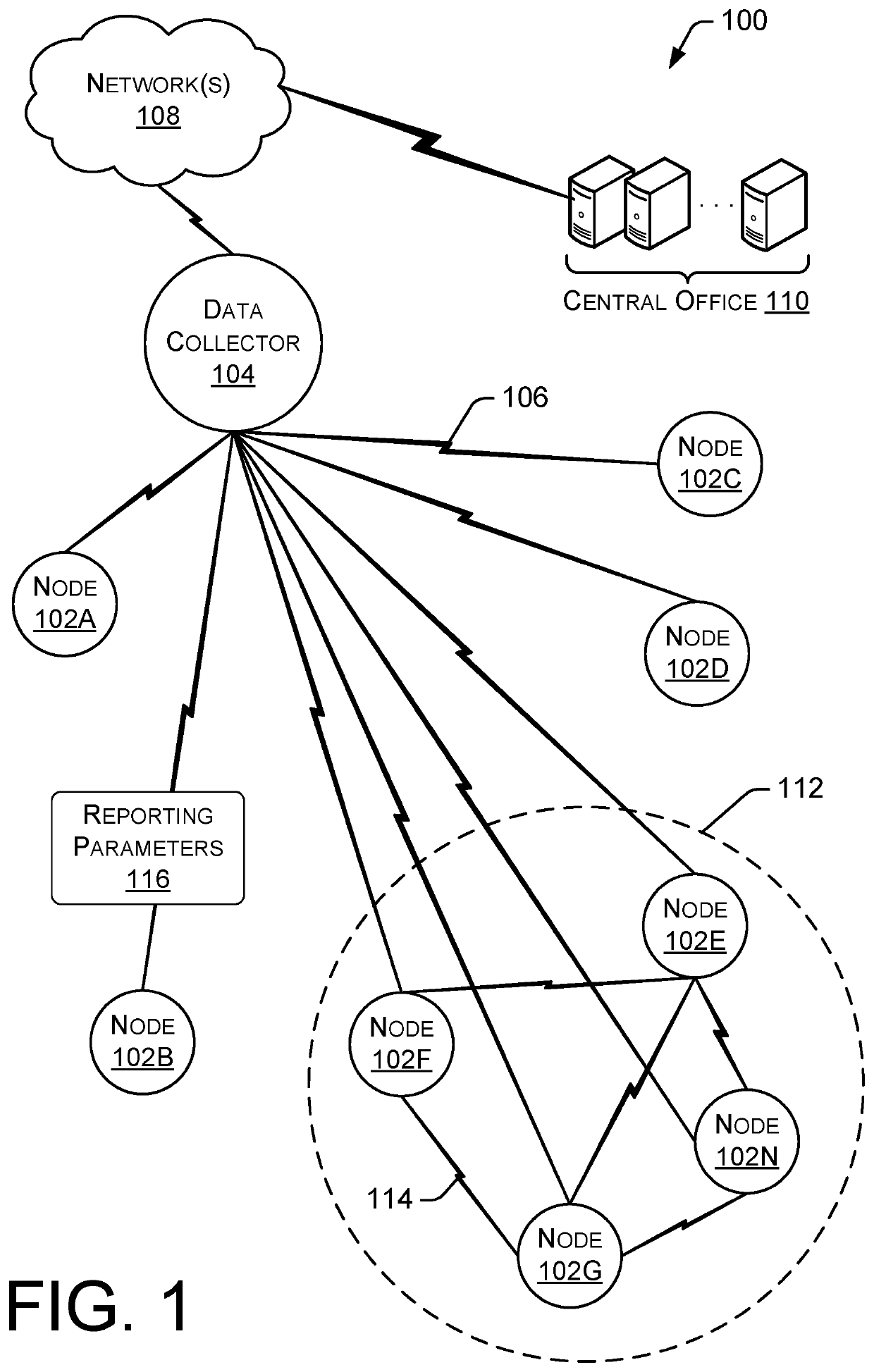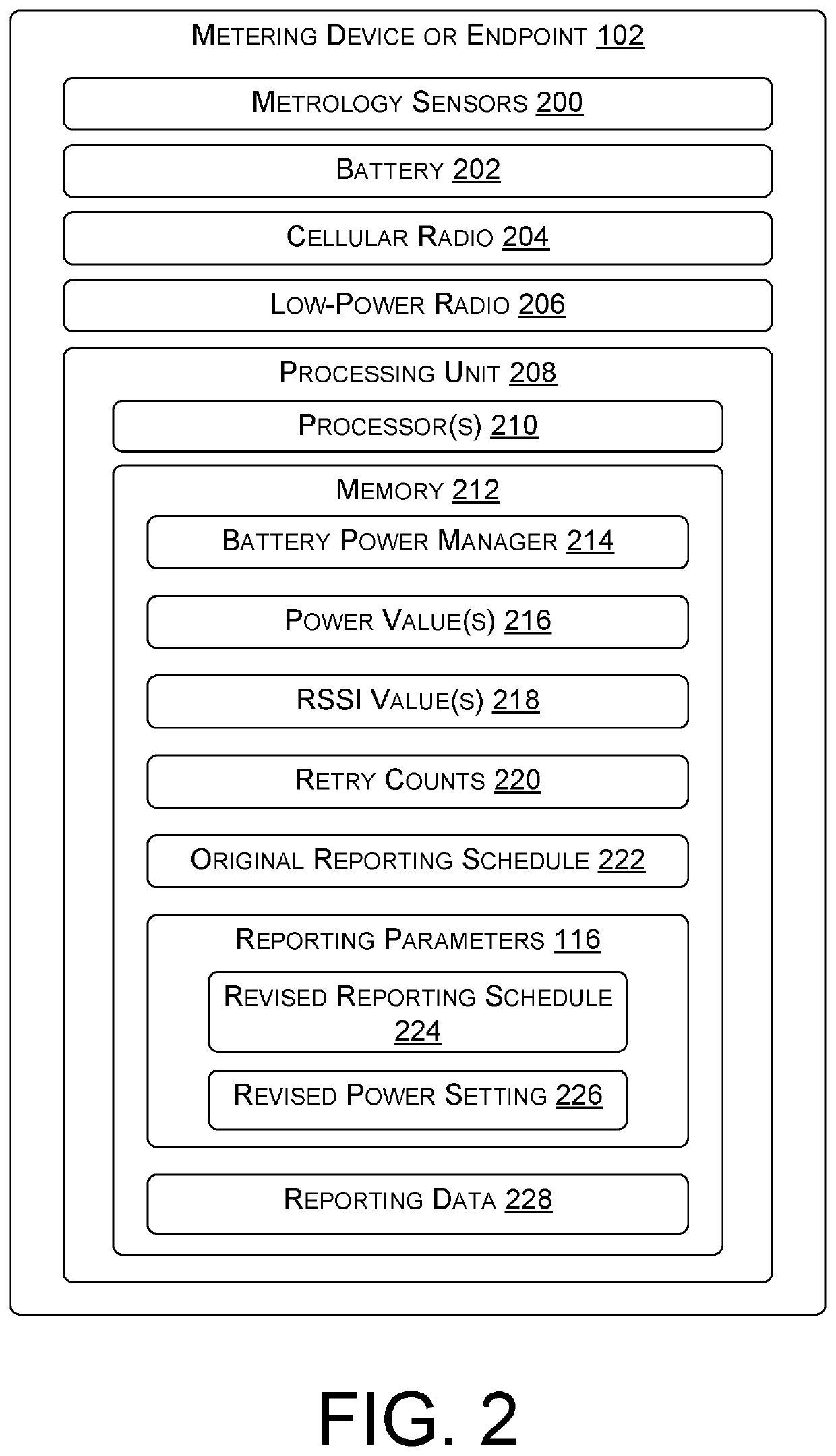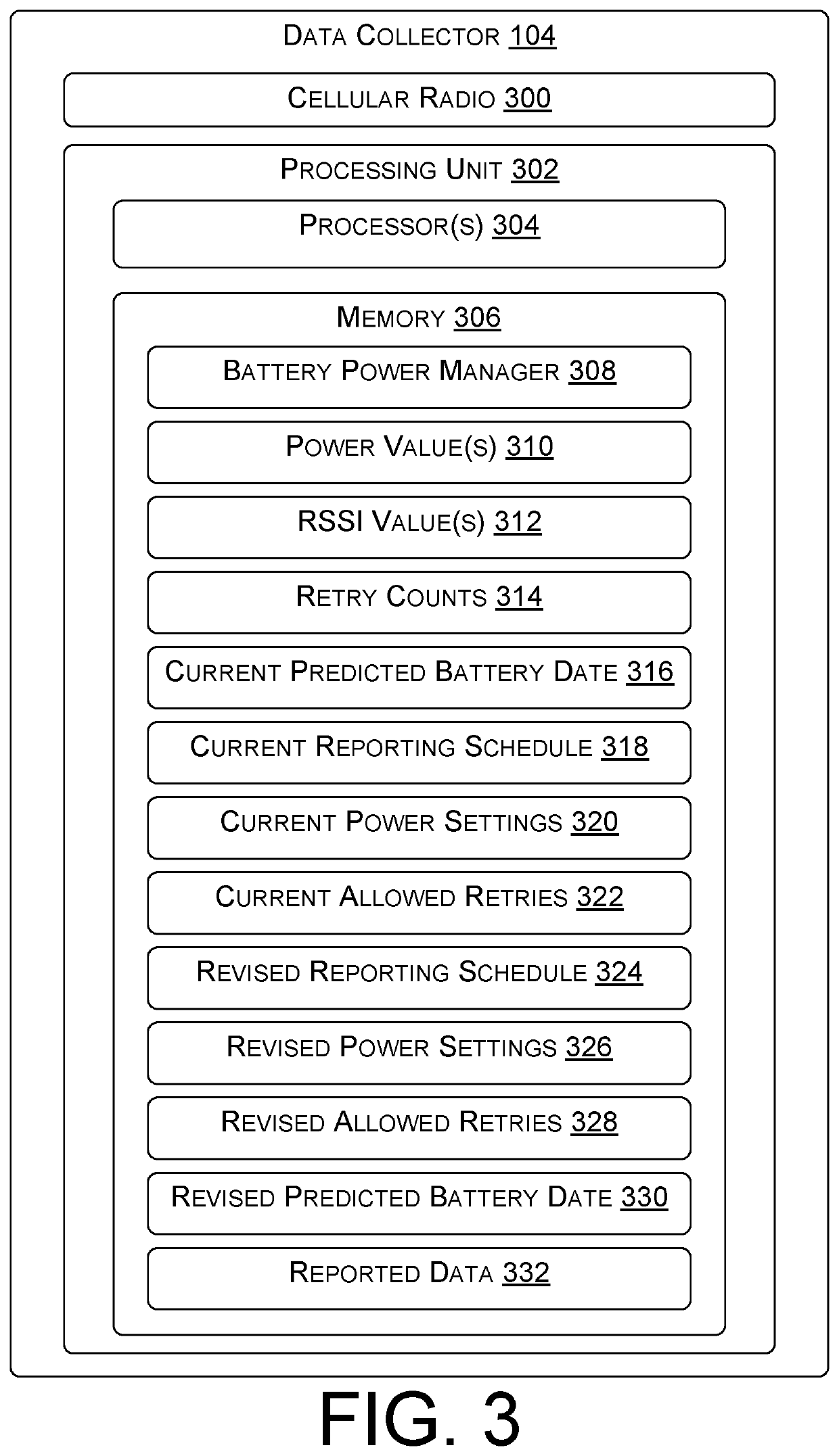Device and Battery Management in a Cellular Network
a technology of cellular network and battery life, applied in power management, high-level techniques, wireless architecture usage, etc., can solve the problem of little that can be done to improve the battery li
- Summary
- Abstract
- Description
- Claims
- Application Information
AI Technical Summary
Benefits of technology
Problems solved by technology
Method used
Image
Examples
Embodiment Construction
Overview
[0013]Innovations discussed here include the adaptation of cellular networks for use in data reporting by utility meters, and for other uses in the retail, warehousing, transportation and internet-of-things (IoT) related industries. Previously, the power required for long-term operation of battery-powered devices on a cellular network has been too high for long-term use. However, innovations discussed herein allow use of cellular network connections, such as cellular network category M (NB1 in Europe), in many battery-powered applications. In some examples, the innovations utilize information, including the transmit power level used at signal transmission, a schedule of transmissions, an actual or allowable number of transmission retries, and / or a received signal strength indicator (RSSI) obtained at signal reception. Use of this information allows for calculation of a battery end-of-life date and allows for modification of reporting parameters, such as a power of transmissi...
PUM
 Login to View More
Login to View More Abstract
Description
Claims
Application Information
 Login to View More
Login to View More - R&D
- Intellectual Property
- Life Sciences
- Materials
- Tech Scout
- Unparalleled Data Quality
- Higher Quality Content
- 60% Fewer Hallucinations
Browse by: Latest US Patents, China's latest patents, Technical Efficacy Thesaurus, Application Domain, Technology Topic, Popular Technical Reports.
© 2025 PatSnap. All rights reserved.Legal|Privacy policy|Modern Slavery Act Transparency Statement|Sitemap|About US| Contact US: help@patsnap.com



